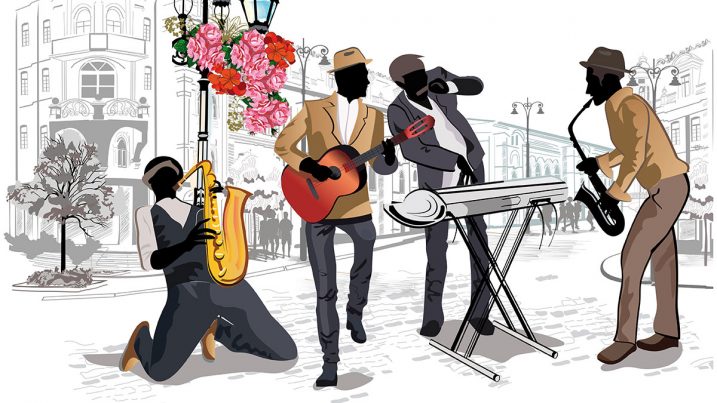Jazz, with its rich history and vibrant evolution, stands as one of the most dynamic and influential genres in the world of music. Born in the early 20th century in the cultural melting pot of New Orleans, jazz has since blossomed into a diverse and global phenomenon. Its unique blend of rhythm, improvisation, and expression has made it a beloved genre for both musicians and listeners alike. In this article, we’ll explore the essence of jazz music, its evolution, and why it continues to captivate audiences around the world.
The Essence of Jazz Music
At its core, jazz is characterized by its emphasis on improvisation, swing rhythms, and complex harmonies. Unlike many other genres, jazz musicians often create and modify their performances in real-time, making each performance a unique experience. This spontaneity and flexibility are central to jazz’s appeal, allowing performers to express their creativity and interact dynamically with one another.
1. Improvisation: One of the hallmarks of jazz is improvisation. Jazz musicians frequently deviate from the written score, creating spontaneous melodies and variations. This freedom allows for personal expression and showcases the individual artistry of each musician. Improvisation is not just about playing what’s written but about creating something new and unique in the moment.
2. Swing Rhythm: Jazz is known for its distinctive swing rhythm, which creates a sense of movement and groove. Swing involves a rhythmic pattern where the emphasis is placed on the off-beat, giving the music a lively and syncopated feel. This rhythmic approach is a defining feature of jazz and contributes to its infectious energy.
3. Complex Harmonies: Jazz often employs sophisticated harmonic structures, including extended chords and altered scales. These harmonies create rich and layered textures, adding depth and complexity to the music. The interplay between harmony and melody is crucial in jazz, allowing for intricate and evolving musical conversations.
The Evolution of Jazz
1. Early Jazz (1910s-1920s): Jazz originated in New Orleans, where African American musicians blended elements of blues, ragtime, and brass band music. The early jazz scene was marked by its energetic and rhythmic qualities, with pioneers like Louis Armstrong and Duke Ellington leading the charge.
2. Swing Era (1930s-1940s): The Swing Era saw jazz gain mainstream popularity, with big bands and swing orchestras dominating the music scene. Figures like Benny Goodman and Count Basie brought jazz to a broader audience, emphasizing danceable rhythms and sophisticated arrangements.
3. Bebop (1940s-1950s): Bebop emerged as a revolutionary movement in jazz, characterized by fast tempos, complex chord changes, and intricate solos. Musicians such as Charlie Parker and Dizzy Gillespie pushed the boundaries of jazz, focusing on technical skill and improvisational freedom.
4. Cool Jazz and Modal Jazz (1950s-1960s): Cool jazz, led by artists like Miles Davis and Dave Brubeck, offered a more relaxed and introspective approach to jazz. Modal jazz, a style that emphasizes scales or modes over traditional chord progressions, also gained prominence, with landmark recordings by Davis and John Coltrane.
5. Free Jazz and Fusion (1960s-1970s): Free jazz, pioneered by Ornette Coleman and others, embraced a more avant-garde approach, breaking away from conventional structures and exploring new forms of expression. Fusion jazz combined elements of rock, funk, and electronic music, creating a genre that crossed traditional boundaries.
6. Contemporary Jazz (1980s-Present): Today, jazz continues to evolve, incorporating influences from various genres and cultures. Contemporary jazz artists blend traditional elements with modern sounds, experimenting with new forms and techniques. Musicians like Kamasi Washington and Esperanza Spalding are pushing the genre in exciting new directions.
Experiencing Jazz Music
1. Listen to Iconic Recordings: Begin your journey into jazz by exploring classic recordings. Albums like Miles Davis’s “Kind of Blue,” John Coltrane’s “A Love Supreme,” and Ella Fitzgerald’s “Ella and Louis” offer a foundational understanding of jazz’s rich history and diverse styles.
2. Attend Live Performances: Jazz is best experienced live, where the spontaneity and energy of improvisation come to life. Seek out local jazz clubs, festivals, and concerts to witness the magic of live jazz and connect with the vibrant jazz community.
3. Explore Different Subgenres: Jazz encompasses a wide range of subgenres, from traditional Dixieland to modern fusion. Exploring different styles can deepen your appreciation and provide insight into the genre’s versatility.
4. Engage with Jazz Education: Many cities offer jazz workshops, classes, and educational programs. Engaging with these resources can enhance your understanding of jazz theory and history, and even provide opportunities to learn an instrument or improvisation techniques.
The Legacy and Influence of Jazz
Jazz has left an indelible mark on the music world and continues to influence various genres, from rock and funk to hip-hop and electronic music. Its emphasis on creativity, improvisation, and emotional expression has inspired countless musicians and listeners, making it a vital and enduring part of global musical culture.
Conclusion
Jazz music, with its rich history, improvisational spirit, and complex harmonies, remains a genre of extraordinary depth and excitement. Whether you’re drawn to its rhythmic swing, innovative solos, or the energy of live performances, jazz offers a unique and enriching musical experience. Dive into the world of jazz, and let its captivating rhythms and melodies inspire and move you as you explore the endless possibilities of this remarkable genre


0 Comments